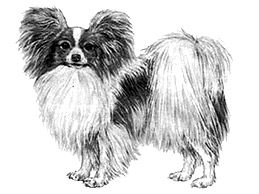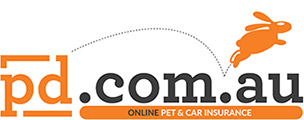Breed standards
Papillon
Breed standards are the official guidelines that describe the ideal characteristics, temperament, and appearance of a breed and ensures that the breed is fit for function with soundness essential.

Pre 1987 Kennel Club, London
This dainty, balanced little toy dog should have an attractive head, an alert bearing and an intelligent and lively expression.
Movement should be sound, light and free and not cramped or restricted in any way.
This dainty, balanced little toy dog should have an attractive head, an alert bearing and an intelligent and lively expression.
(Not detailed.)
The skull slightly rounded between the ears, the muzzle finely pointed and abruptly thinner than the skull accentuating the stop which should be well defined. Length from tip of the nose to the stop approximately a third length of the head. Nose should be black.
Of medium size, rounded, dark in colour, placed rather low in the head and should not bulge.
The ears should be large and mobile with rounded tips, heavily fringed, set towards the back of the head far enough apart to show the slightly rounded shape of the skull. The ears must be completely erect or dropped. When the ears are erect they must be carried obliquely like the spread wings of a butterfly, therefore the name, Papillon. When the ears are dropped they must be completely dropped, and this type is known as the Phalene (moth).
Scissor bite, upper teeth fitting closely over lower. The lips thin and tight.
Of medium length.
Shoulders well developed and sloping back. Chest rather deep. Forelegs straight and slender and fine boned.
Level topline. The body should have plenty of length, well formed with well sprung ribs, good length of loin which must not be weak, with slightly arched belly.
Well developed, good turn of stifle. Legs when viewed from behind, should be parallel. Dew claws on the hind legs must be removed.
Fine and fairly long, as in the hare. The tufts of hair between the toes extending far beyond them.
Long and well fringed, set on high, arched over the back with the fringes falling to the side to form the plume.
Movement should be sound, light and free and not cramped or restricted in any way.
Should be abundant, (flowing) but without undercoat, long fine, silky, falling flat on back and sides forming a profuse frill on the chest, short and close on the skull, muzzle and front part of the legs. Back part of the front legs to pasterns, tail and thighs covered with long hair.
White with patches which may be any colour except liver. A tricolour must be black and white with tan spots over the eyes, tan inside ears and under root of tail and on cheeks. The head marking should be symmetrical about a white, narrow, clearly defined blaze.
The ideal height at the withers from 20.3-28 cm (8-11 ins). The dog will appear to be slightly longer than high when properly furnished with ruff and hind fringes.
Any departure from the foregoing points should be considered a fault and the seriousness with which the fault should be regarded should be in exact proportion to its degree and its effect upon the health and welfare of the dog.
Skull flat or apple shaped. Muzzle overlong or coarse. Nose other than black.
Eyes light in colour, too small or too large, or protruding.
Ears semi-erect or not fully dropped, small, sharply pointed or set too close together.
Mouth over- or undershot to the extent that the incisors do not touch at all.
Wry mouth.
Shoulders straight. Out at elbow. Topline roached, dipped or cobby.
Legs malformed and crooked, cow hocked, too long or too short.
Stifles straight, coupled with weak hindquarters.
Tail unduly short. Too low set.
Harsh, curly or stand-off coat.
Male animals should have two apparently normal testicles fully descended into the scrotum.



